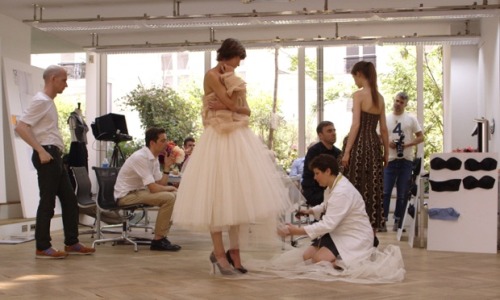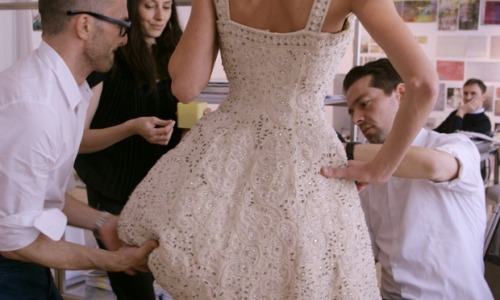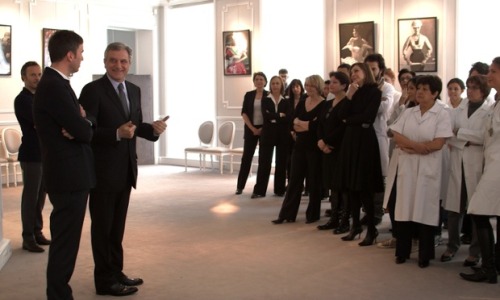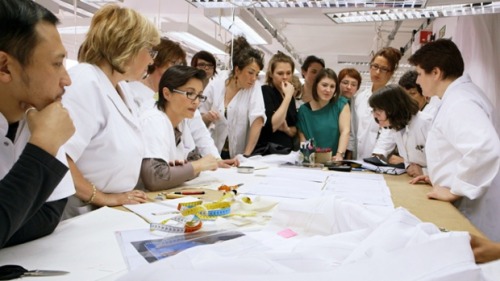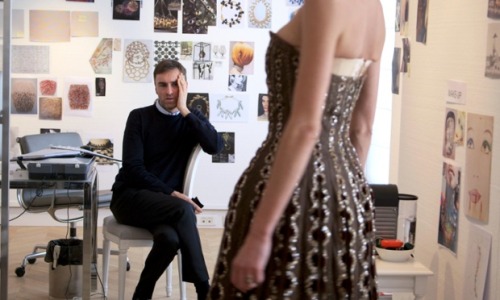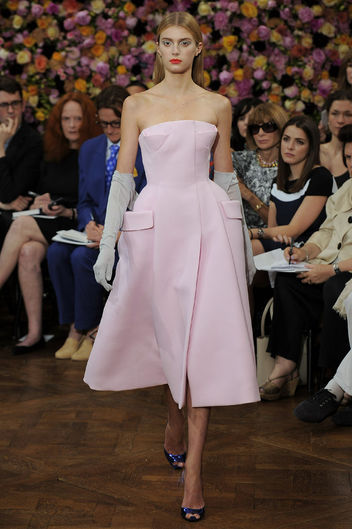Classy film: Dior & IThree years ago, Jil Sander and menswear designer Raf Simons took the h
Classy film: Dior & IThree years ago, Jil Sander and menswear designer Raf Simons took the helm at Dior, ending over a year of scandal and speculation which had started with that John Galliano video. Although no one doubted Simons’ talent, and his name had been mentioned alongside roles at several LVMH-Kering brands, it wasn’t the most obvious of matches.Frédéric Tcheng, who previously directed hailed fashion films Valentino: the Last Emperor and Diana Vreeland: the Eye Has to Travel, “went to the Dior press office long before they appointed a new creative director and said, if Raf gets the job, I think you have a great story” (Telegraph.co.uk). Simons got the job and Tcheng started an eight-week marathon, filming Simons making his first-ever haute couture collection in record time. Little else is known about the deal, aside from the fact that Simons wasn’t involved in the editing process. A necessary clarification, considering how positive Dior and I is. Tcheng strikes for balance between putting Simons on a pedestal and humanising scenes, such as the designer weeping from stress on a Paris rooftop hours before the show. The pressure and expectation on him were phenomenal. Another has Simons meeting with the in-house PR, asking not to do too many interviews after the show because he doesn’t like publicity. The irony of saying this in front of Tcheng’s camera isn’t lost to the viewer. It feels a tad manipulative, as if we were told to feel even more grateful for what we are allowed to see. But humanising moments don’t add up to an unbiased movie. As is often the case with fashion films, Dior and I amounts to a feature-length advert for the brand. The message is unfailingly positive. Simons is great, and managed to pull off in eight weeks something few could have done. Simons is perfect for Dior, a true heir to Monsieur Dior, as hinted by the voiceover extracts taken from Dior by Dior (the founder’s autobiography) that draw a parallel between the founder’s state of mind and creative process and Simons’. The Dior employees are skilled, dedicated, loving artists. This is the film message, with no alternative offered, even if it could have strengthened the feature. To achieve this storytelling, Tcheng focuses on the creative process. He films Simons looking at archive dresses from the house’s earliest years and reinterpreting them for Fall 2012, Simons going to the Centre Pompidou and deciding to use Sterling Ruby as print inspiration. Yet, maybe because this is the side of fashion I work in, I was more interested in the glimpses of how the Dior business is ran, though they were few. Creative, especially for a collection which was successful and isn’t even on sale anymore, can be unveiled. Creative is what makes the romanticism of fashion. The business secrets on which the house runs is a whole different story, something Dior isn’t ready to put out there. I wish Tcheng had gone there more. In a more business moment, Simons gets annoyed because his première flou is attending a client’s fitting State-side, rather than being available to show him the first dresses for the collection. When a customer who spends thousands of euros per year on the house’s creations asks for an alteration, Dior sends the best available resource, something Simons seems to struggle with. Yet this is likely the kind of behaviour that enables the house to claim its haute couture operation is profitable. Another creative vs. business tension comes when Simons declares his desire to cover a Parisian mansion in blooms, as a backdrop of the show. No price tag is ever mentioned. No one, especially not US Vogue editor-in-chief Anna Wintour who jokes about him not having budget issue, is under any illusion about how hefty it must be. In addition to customers and the fashion press, Dior deals with analysts and investors. Dior and I is a demonstration of the company’s financial health as much as of its design prowess. In its interim financial report for the six months period ending 31 December 2014, the Christian Dior group claims: “revenue for Christian Dior Couture over the period from July 1 to December 31, 2014 was 854 million euros, up 11% at constant exchange rates”. Luxury communication is tightly controlled, and there was no way the house of Dior was going to let a film be made that suggested any different. Watching Dior and I, I realised how my take on fashion films has changed since I started working in the industry. The brand and the creative might be different but I recognised so many moments and identified with so many feelings. The outside tailors pulled in last minute the day before the show. The all-nighters, when you think that there is no way it will happen on time, yet it does, because of fashion magic. The feeling of loss and pride when a collection, which had been internal eyes only, steps on to the runway. Thanks to my Women in Foreign Policy website, some days I go from editing an interview with a woman hopping the globe from refugee camp to refugee camp to making sure copy about luxury handbags is delivered on time. At times it seems fickle but watching Dior and I, recognising the dedication and drive in employees from another brand, it felt right. I’ve been trying to make my peace with working in fashion while attempting to contribute to foreign policy. Dior and I, for all its subjective flaws, got me one step closer to it. -- source link
Tumblr Blog : fashionabecedaire.tumblr.com
#classy film#christian dior#marketing#anna wintour
